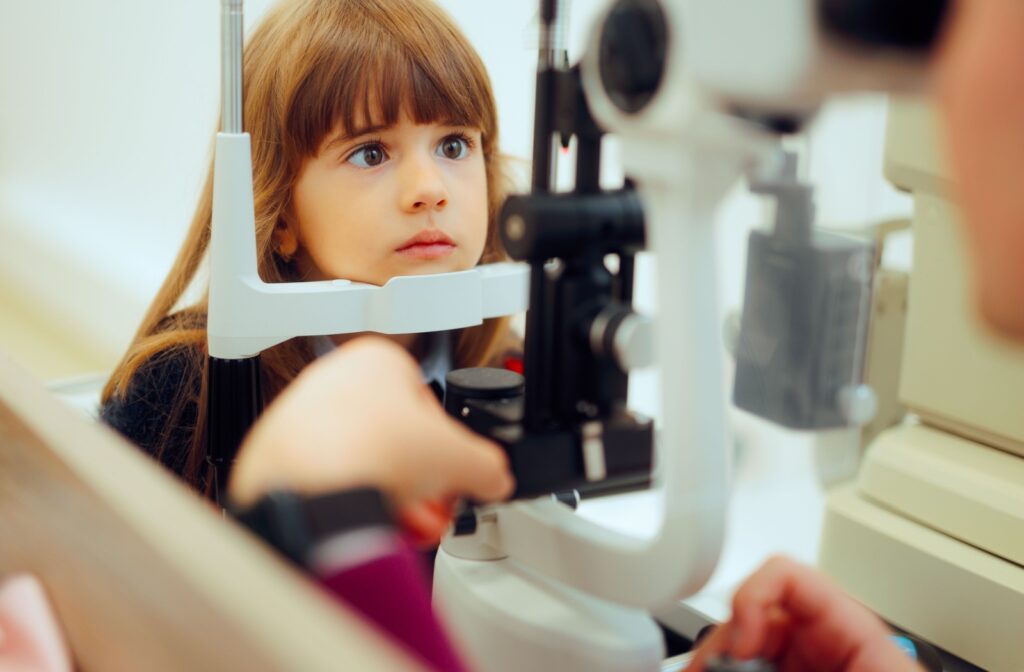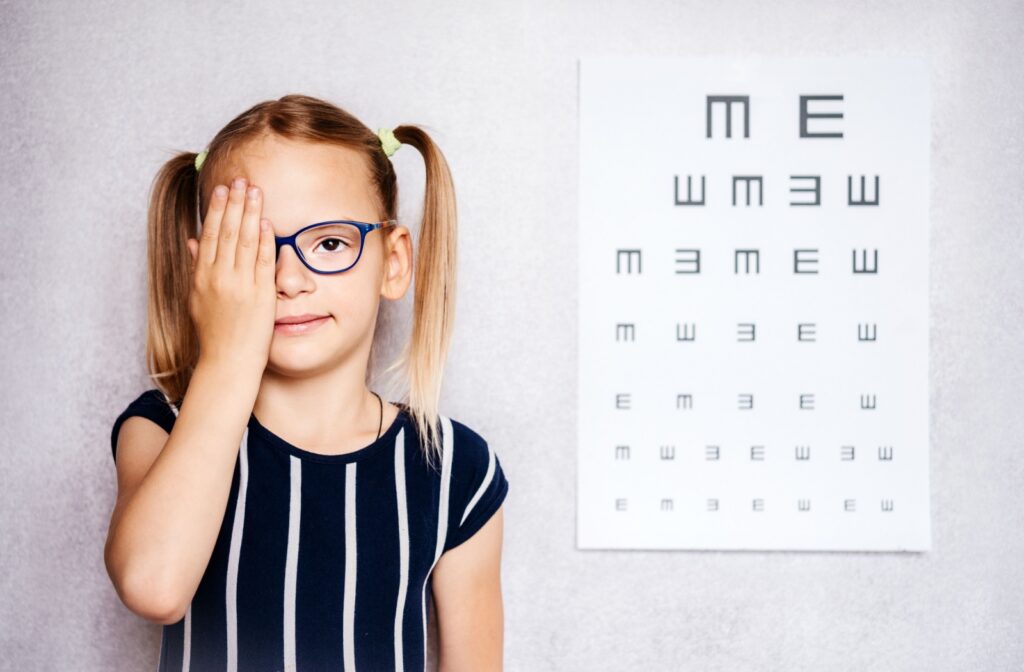When it comes to eye conditions, two common terms that are often used interchangeably are strabismus and amblyopia. While both conditions affect the eyes and can occur simultaneously in some cases, there are key differences between these two conditions.
Strabismus, commonly known as crossed eyes, refers to a condition where the eyes do not properly align with each other when looking at an object. Amblyopia, on the other hand, is often referred to as lazy eye and occurs when the brain fails to process inputs from one eye, leading to poorer vision in that eye.
Strabismus can be caused by an imbalance in the muscles that control eye movement, by neurological issues, or by other medical conditions. Amblyopia typically develops in early childhood, often stems from strabismus, and involves significant differences in refractive errors between the eyes and/or other conditions that interfere with normal visual development.
Strabismus: A Misalignment of the Eyes
Strabismus, also known as crossed eyes or squint, is a visual condition characterized by misaligned or crossed eyes. This means that, when looking at an object, one eye may be pointing straight ahead while the other eye may be turned inwards, outwards, upwards or downwards. This misalignment can be constant or intermittent and can affect one or both eyes.
There are several types of strabismus, including:
- Esotropia: inward turning of the eye
- Exotropia: outward turning of the eye
- Hypertropia: upward turning of the eye
- Hypotropia: downward turning of the eye
Strabismus is a common condition, affecting approximately 2-4% of children. It can occur at any age, but is most commonly diagnosed in infants and young children. If left untreated, it can lead to poor depth perception and visual confusion.
Causes of Strabismus
The exact cause of strabismus is not fully understood, but it is believed to be a combination of genetic and environmental factors. Some possible causes include:
- Muscle imbalance: When the muscles that control eye movement are not working together properly, this can result in misalignment.
- Neurological conditions: Certain neurological disorders, such as cerebral palsy or brain tumors, can affect eye movement and lead to strabismus.
- Trauma or injury: In some cases, an injury or trauma to the eye area can cause muscles to weaken or become damaged, resulting in strabismus.
- Medical conditions: Strabismus may also develop as a result of certain medical conditions, such as thyroid eye disease or diabetes.
Symptoms of Strabismus
The most obvious symptom of strabismus is misalignment of the eyes. However, there are other signs that may indicate a person has strabismus, including:
- Double vision: Seeing two images instead of one can be a sign of strabismus. This occurs when the brain receives conflicting signals from the two misaligned eyes.
- Squinting: In an attempt to align their eyes and see more clearly, individuals with strabismus may squint or close one eye.
- Head tilting: Some people with strabismus may tilt their head in order to compensate for their misaligned eyes and improve their vision.
- Eye fatigue: Strabismus can cause eye strain and fatigue, especially when trying to focus on objects or read for extended periods of time.
- Poor depth perception: Misaligned eyes can make it difficult to accurately judge distances, which may lead to clumsiness or difficulty with tasks that require hand-eye coordination.

Amblyopia: The Consequences of Untreated Strabismus
Amblyopia, also known as “lazy eye,” is a common consequence of untreated strabismus. It occurs when the brain starts to ignore visual signals from one eye because it is not being used properly. If left untreated, amblyopia can cause permanent vision loss in the affected eye and may lead to other complications such as poor depth perception and difficulty with tasks that require good hand-eye coordination.
The Importance of Early Diagnosis
The good news is that both strabismus and amblyopia can be treated successfully, especially if caught early on. Children should have their eyes checked regularly by an ophthalmologist or optometrist, especially if there is a family history of strabismus or other eye conditions. Early detection and treatment can prevent permanent vision loss and improve the chances of successful treatment.
How Can These Conditions Be Treated?
The treatment for both strabismus and amblyopia depends on the underlying cause and severity of the condition. For strabismus, corrective lenses, eye exercises, or surgery may be recommended to help align the eyes properly. The goal is to improve binocular vision and prevent double vision.
In the case of amblyopia, treatment often involves patching or covering the stronger eye in order to force the brain to use and develop vision in the weaker eye. This approach can be combined with glasses or contact lenses to correct any refractive errors. Vision therapy may also be recommended to help improve visual function in both eyes.
Tips for Prevention
While some cases of strabismus and amblyopia cannot be prevented, there are steps that can be taken to reduce the risk or severity of these conditions. This includes early detection and treatment of eye issues in children, as well as regular vision screenings and check-ups.
It’s also important to protect your child’s eyes from injury, such as wearing protective eyewear when participating in sports or activities that could potentially harm the eyes. Additionally, maintaining a healthy lifestyle with proper nutrition and limiting screen time can also help promote normal visual development.
Comprehensive Care for Strabismus & Amblyopia at Fort Myers Eye Associates
Understanding the differences between strabismus and amblyopia is crucial for effective management and treatment of these eye conditions. Early detection and intervention are key to preventing long-term complications associated with these conditions.
At Fort Myers Eye Associates, our team is dedicated to providing comprehensive eye care services, including diagnosis and treatment for strabismus and amblyopia. We recommend regular eye exams for both children and adults to ensure optimal eye health. Contact us today to schedule an appointment or learn more about our services.





